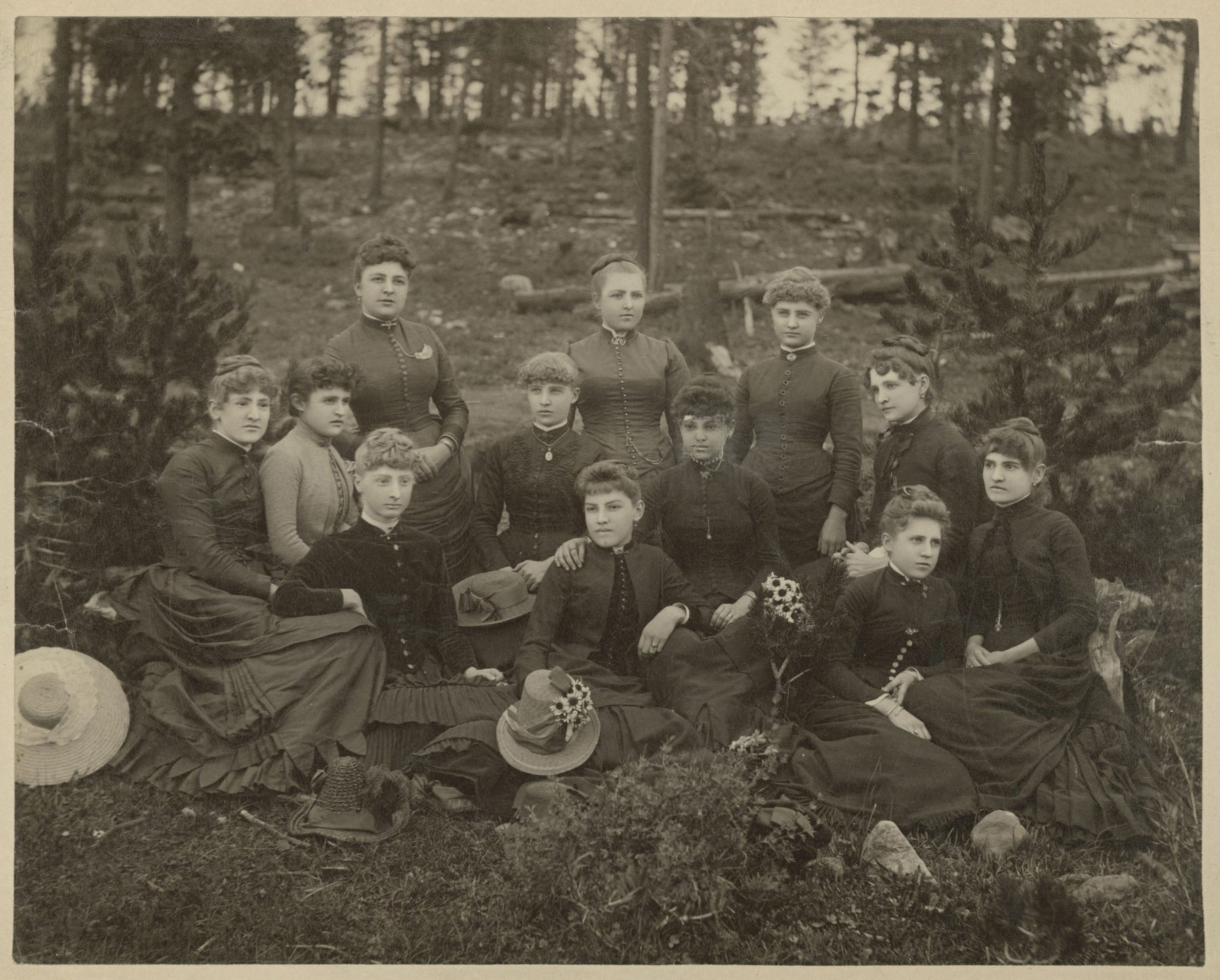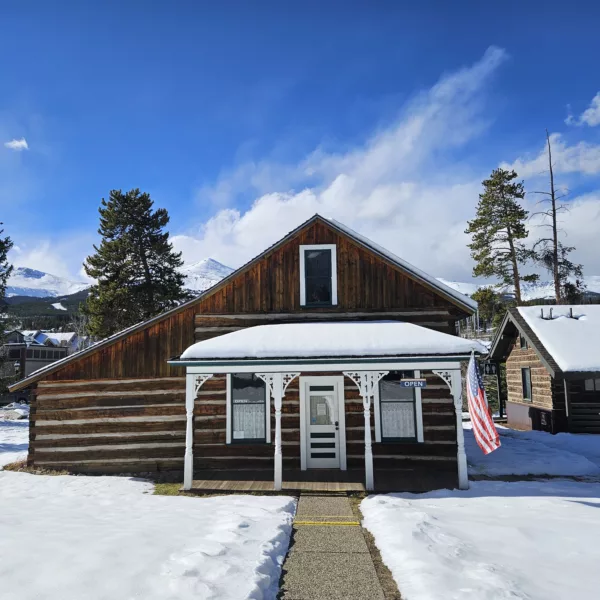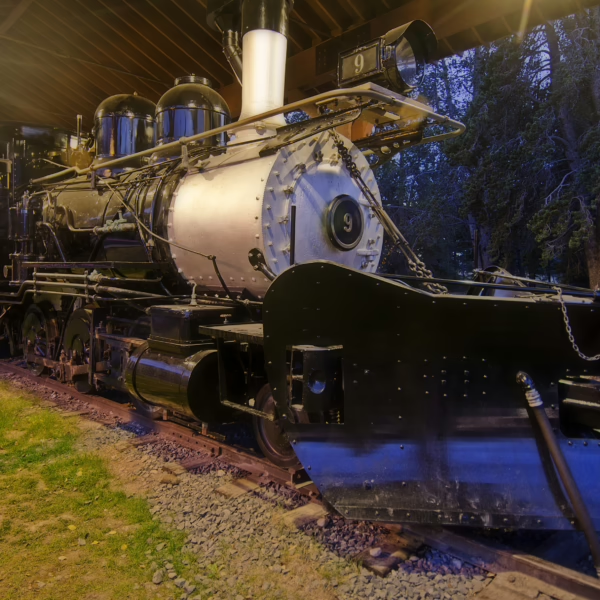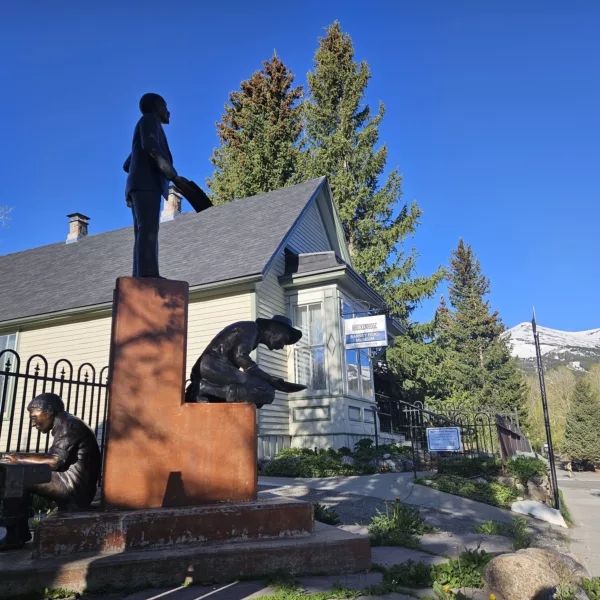Las mujeres de Breckenridge
April 08, 2022 | Category: Historia de Breckenridge
 ¿Quiénes eran las mujeres que llegaron a Breckenridge en la década de 1880? ¿De dónde venían? ¿Hicieron voluntariamente el viaje a Breckenridge? ¿Qué encontraron al llegar? Los datos del censo y los diarios cuentan la historia.
¿Quiénes eran las mujeres que llegaron a Breckenridge en la década de 1880? ¿De dónde venían? ¿Hicieron voluntariamente el viaje a Breckenridge? ¿Qué encontraron al llegar? Los datos del censo y los diarios cuentan la historia.
La pobreza, la promesa de prosperidad, el clima, el matrimonio, la tierra libre y la grave depresión de 1857 empujaron a la gente a abandonar su "hogar" y la arrastraron a Colorado. En una familia, el marido solía hacer la primera proposición para ir al oeste. Las mujeres reaccionaban de diversas maneras: de acuerdo, en desacuerdo; con reticencia, con impaciencia; con miedo, con entusiasmo; con alegría, con tristeza; con esperanza, con resignación y, a menudo, con total sorpresa.
Para la mayoría de las mujeres, sin embargo, dejar familia y amigos resultó bastante difícil. Tanto si se dirigían al oeste voluntariamente como si no, la mayoría de las mujeres nunca dejaban de mirar atrás a los que dejaban atrás.
La mayoría de las mujeres que llegaron al condado de Summit en la década de 1880 habían vivido en cuatro estados: Pensilvania, donde la depresión de 1857 golpeó con especial dureza, Ohio, Nueva York e Illinois. De las nacidas fuera de Estados Unidos, el mayor número con diferencia procedía de Gales, Cornualles, Inglaterra, Canadá, Irlanda, Escocia y los estados alemanes. Otros países representados eran Suecia, Noruega, Suiza, Francia, Dinamarca, Holanda, Austria, Rusia e Italia.
Una mujer de ascendencia china vivía en Breckenridge en 1885. Por regla general, los hombres chinos no traían a sus familias. La gran mayoría de las mujeres chinas habían sido traídas a Estados Unidos, a veces ya en su infancia, para servir a los hombres como prostitutas. Como los hombres chinos no se casaban con mujeres no chinas, muchas de las prostitutas se convertían en esposas de hombres chinos mucho mayores. La única mujer china que vivía en Breckenridge, Lee Cum, de 25 años, se había casado con Lee Chin, de 52 años. Ambos trabajaban en una lavandería. ¿Había sido una prostituta obligada a casarse con un hombre mucho mayor que ella?
Los hombres superaban ampliamente a las mujeres en Breckenridge.
- 1870: Hombres 139, Mujeres 26
- 1880: Hombres 1371, Mujeres 287
- 1885: Hombres 622, Mujeres 335
Pero en una sociedad dominada por los hombres, las mujeres ejercían una influencia muy superior a la que cabría esperar de tan pocas. Cuando las mujeres llegaron en mayor número, se dedicaron a reformar la bebida, el juego y las actividades sexuales. Para vencer el atractivo de estas actividades, las mujeres fundaron iglesias, bibliotecas, escuelas, lobatos sociales y hospitales. Daban fiestas y organizaban cenas y bailes.
Aunque las mujeres trabajaron duro para influir en la ciudad, nunca llegaron a tener un impacto importante sobre el juego, la bebida y la prostitución. Lideradas por el clero, en general abrazaron el movimiento antialcohólico de mediados de la década de 1880; pero los valores victorianos que defendían las mujeres chocaban con una empresa económica que proporcionaba una base fiscal estable y daba empleo a numerosas personas.
Un público entusiasta asistía a las reuniones sobre la templanza que se celebraban en el salón del Gran Ejército de la República y en las iglesias. El director del periódico expresaba su simpatía por el movimiento, pero recordaba a los lectores que los propietarios de los salones compraban licencias para operar, pagaban impuestos y apoyaban proyectos cívicos. Los empleados de los salones gastaban sus salarios en los negocios locales. Los taberneros y propietarios habían sido elegidos superintendente escolar, sheriff, tesorero municipal y alcalde.
Las oportunidades de empleo para las mujeres eran limitadas, aunque el "trabajo" femenino estaba muy solicitado. Cocinaban, limpiaban, cosían, lavaban, planchaban y acogían huéspedes. Podían realizar estos servicios para el marido y la familia o podían formar parte de la acción, tal vez siendo propietarias de una pensión u otro negocio con empleadas. Algunas eran propietarias de tiendas y comercios: papelerías, sombrererías, talleres de costura, tiendas de productos generales. Otras trabajaban como dependientas en tiendas u oficinas. Algunas mantuvieron carreras profesionales. Numerosas mujeres de Breckenridge enseñaban a los niños a tocar el piano y otros instrumentos musicales. Era una época en la que las madres pensaban que sus hijas necesitaban tocar el piano para encontrar un marido "adecuado". Cuando Scott McClarren, propietario del Cabinet Saloon, murió, su mujer convirtió el negocio en el exitoso Metropolitan Dining Room. Minnie Bruch abrió una tienda de dulces y fruta al lado de la barbería de su marido. Anunciaba los mejores dulces y frutas y la mayor selección de regalos de San Valentín del condado. Katherine Sisler Nolan dirigió la enorme empresa minera de su marido en French Gulch tras su muerte. El editor del periódico la reconoció como una astuta mujer de negocios: "la única señora propietaria de minas en el distrito de Breckenridge que supervisa personalmente las operaciones de la propiedad".
Pocas mujeres entraron en la profesión médica, pero el 1 de agosto de 1899, el periódico anunció que la recién llegada señorita Kate De P. Moville, una "dentista entrenada," estaba "preparada y competente para hacer todo en la línea dental." Ubicó su consultorio en la Casa Remine, propiedad de Fannie Remine y administrada por ella.
En general, las mujeres podían encontrar trabajo como profesoras -especialmente las solteras- y a menudo inmediatamente después de graduarse en la escuela secundaria, como hicieron Annie Sisler y Fannie Remine. La gente pensaba que la enseñanza era adecuada para las mujeres, ya que era una extensión natural de su papel de madre. Además, los bajos salarios no disuadían a las mujeres. Por lo general, las maestras solteras se alojaban con una familia en lugar de vivir en un lugar propio y a veces tenían que realizar tareas domésticas como parte de su empleo. Los habitantes de la zona los vigilaban constantemente por si mostraban un comportamiento inadecuado. Para ser maestro, bastaba con presentarse al examen de maestro que ofrecía cuatro veces al año el superintendente de la escuela. El director del periódico anunciaba los resultados.
Para las viudas o divorciadas con hijos a su cargo, las oportunidades de empleo pueden ser limitadas. El censo registró cocinera, lavandera, "agua" [camarero] en un hotel y lavandera. En el caso de algunas mujeres con hijos, el empadronador no indicaba ningún medio de subsistencia.
Debido a la escasez de organismos sociales para ayudar a quienes se enfrentaban a la pobreza, la viudedad, el divorcio, el abandono y la depresión, las mujeres organizaron sus propias soluciones. Ya fuera de manera informal o a través de organizaciones como las Mujeres de la Madera o las Rebekahs, ayudaban activamente allí donde podían.
Los que disponían de medios económicos intentaban que sus casas cumplieran las normas domésticas de la época. Cubrían las paredes y los techos con periódicos para retener el calor y añadían papel pintado si la economía lo permitía. Los trapos viejos se convertían en alfombras y los retazos de tela en colchas.
Para mantenerse en contacto con otras mujeres, crearon clubes informales: club de cocina, club literario, club de costura, club de debate, club de taffy, glee cub, incluso un club para las que venían de Pensilvania, por nombrar sólo algunos. Se unieron a organizaciones formales como la Orden de la Estrella Oriental, la Logia Rebekah, las Mujeres de la Artesanía de la Madera y el Grado de Pocahontas.
La etiqueta regía la vida de las clases media y alta. Intercambiaban tarjetas de visita ornamentadas durante las visitas formales; servían el té e invitaban a invitados especiales; caminaban despacio sin importar el tiempo que hiciera o lo nevada, helada o embarrada que estuviera la acera. Cada semana se celebraban cenas en casas lujosamente decoradas. Los libros prescribían la etiqueta adecuada para casi todas las situaciones. Los que disponían de un poco de tiempo libre aprendían el lenguaje de las flores, cómo enviar mensajes con un abanico y lo que decía al destinatario la colocación de los sellos en un sobre.
Al mismo tiempo que establecían sus hogares y redes sociales, las mujeres tenían que enfrentarse a embarazos, partos, enfermedades y muertes infantiles. El parto presentaba graves peligros. El periódico anunciaba con tristeza la muerte de bebés y madres. Pero el editor se alegraba de las "brigadas de bebés", señalando los "brillantes, regordetes e interesantes bebés de la ciudad".
Los primeros impulsores se jactaban de la ausencia de médicos, subrayando que "no se necesitaba ninguno, gracias". Pero las enfermedades se cobraron la vida de jóvenes y viejos. Las muertes no diagnosticadas se atribuían a una "descomposición general del sistema". Prevalecían las condiciones insalubres: montones de basura y retretes contaminaban el suministro de agua. La difteria, la gripe, la viruela y la neumonía se cobraban su tributo anual.
Algunas mujeres prosperaron en Breckenridge. Fundaron familias y contribuyeron al desarrollo de la ciudad. Soportaron inviernos largos, fríos y nevados y aprendieron a adaptar las recetas a la altitud. La lucha por los demás nunca cesó. Su añoranza por la familia que habían dejado "en casa" pesaba mucho. Mientras que algunos regresaban a "casa" tras la muerte de su cónyuge, el matrimonio hacía que otros no tuvieran más remedio que quedarse. Una mujer de mediados de la década de 1880 escribió en su diario después de una tormenta de nieve de tres días: "Si tengo que vivir toda mi vida en Breckenridge, ¡espero que sea corta!".
escrito por Sandra F. Mather, PhD




